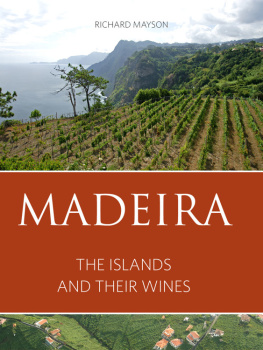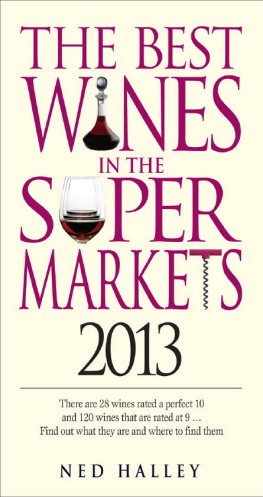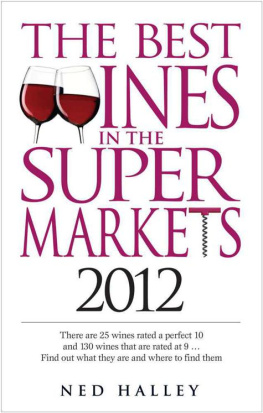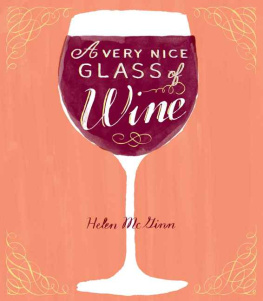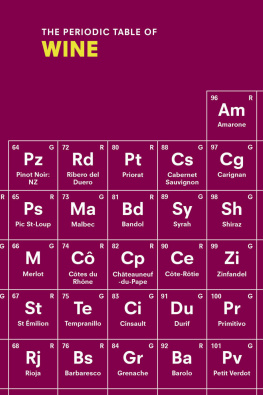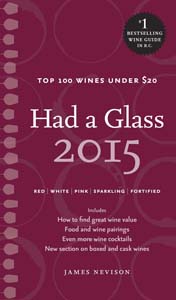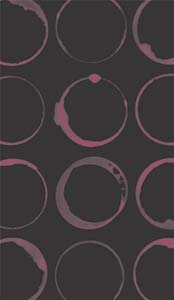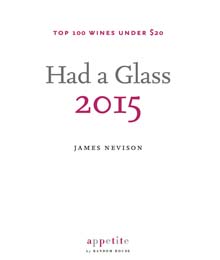Copyright 2014 James Nevison
All rights reserved. The use of any part of this publication, reproduced, transmitted in any form or by any means electronic, mechanical, photocopying, recording or otherwise, or stored in a retrieval system without the prior written consent of the publisheror in the case of photocopying or other reprographic copying, license from the Canadian Copyright Licensing Agencyis an infringement of the copyright law.
Appetite by Random House and colophon are registered trademarks of Random House LLC.
Library and Archives of Canada Cataloguing in Publication is available upon request
ISBN: 978-0-449-01616-9
ebook ISBN: 978-0-449-01617-6
Published in Canada by Appetite by Random House,
a division of Random House of Canada Limited,
a Penguin Random House company
www.penguinrandomhouse.ca

v3.1
CONTENTS
A Brief Guide to Wine Enjoyment
Had a Glass?
Welcome to Had a Glass. This is the guide for everyday wine enjoyment.
Had a Glass wades through the muck and murky liquid to point out 100 wines worth sipping. Consider it a vinous compass to keep you from getting lost in the wine aisles. Better yet, all the wines featured on these pages sell for under $20. Because wine is meant for everyday enjoyment, and every meal deserves a glass of wine.
Had a Glass is filled with the straight wine goods. Each wine is here for a reason, whether it is perfect for patio sipping, pairs remarkably with salmon, or simply inspires engagement in impromptu conversation. The wines come from all over the globe and represent a broad mix of grape varieties. There are reds and whites, not to mention ross and sparkling, even a few fortified wines! Its true wine diversity, and true wine value.
Had a Glass is easy to use: pick a page, read the blurb, get the wine, and see what you think. Repeat.
But remember: wine is best enjoyed in moderation. Know your limit and always have a safe way to get home. Such is the path to true wine appreciation.
Caveat Emptor and Carpe Diem!
Had a Glass goes out of the way to select wines that are widely available. Everyone deserves good wine, no matter what your postal code. While every effort is made to ensure prices and vintages are correct at publication, good wine buys sell out, and wines are subject to price variances and vintage changes.
It is recommended to use this book as a starting point for your wine adventures. Great bottles are out there, and as with all things worth searching for, the fun is in the hunt.
Wine, Barcoded
In a nod to interactivity, Had a Glass features barcodes for each wine. Given the proliferation of smartphones there are all sorts of uses for this handy addition. Using the growing number of available wine apps, you can scan the barcodes to locate stores and availability for each wine. Or scan your favourite bottles to create your own personalized wine-tasting journal!
A Word about Value
Value is at best squishy and hard to pin down. Value is personal. And like scoring wine on a 100-point scale, its tough for an objective framework to try to prop up subjective tastes. But whether youre after price rollbacks at a big-box store or handmade designer goods, true value occurs when returns exceed expectations.
How is value applied in Had a Glass?
Most of the time the budget and bank account set a comfortable limit of my wine allotment at $20. On occasion I may spend more, but overall I toe the line. From research I know the majority of you feel the same. We all love great $18 bottles of wine. But we love cracking into a tasty $12 bottle even more!
Had a Glass celebrates wines that give you the best bottle for your buck: the $10 wine that seems like it should cost $15, the $15 bottle that stands out, and the $20 wine that knocks your socks off. Wine should be an everyday beverage, not a luxuryan enjoyable accessory to good living.
How to Taste Wine
Drinking wine and tasting wine are two different pastimes. Now, theres nothing wrong with simply wanting to open a bottle, pour a glass, and carry on. Indeed, most of the time this is standard protocol. Company has arrived and dinner is on the table and away we go!
But if youre ready to take your relationship with wine to the next level, its time to commit to proper tasting technique. This permits a complete sensory evaluation of the wine in your glass, and I promise that it will add to your wine enjoyment as well.
Youve likely heard the motto that a good wine is a wine you like. Sure, at the end of the day taste is subjective and personal opinion matters. But what really makes a wine good? After you understand how to taste wine, youll be equipped to make that call.
The Four Steps
Theres no need to overcomplicate wine tasting. Nothing is more boring than listening to some wine blowhard drone on at length about the laundry list of aromas they detect, or slurp on for minutes as they attempt to pinpoint precise acidity and residual sugar levels. First impressions are often the best. Tasting wine is not a competition. It should be fun, which means yes, smile as you swirl and sip.
Heres the wine-tasting process in four simple steps:
Step 1: The look
You can learn a lot simply by looking at a wine. Tilt the wineglass away from you and observe its colour, ideally against a white background (a blank sheet of paper works in a pinch). White wines appear pallid straw to deep gold, and reds typically range from light ruby to the dark crimson of a royals ceremonial robeeven at times the neon purple of grape Gatorade. A wines colour can also hint at its age. Young white wines often have the brilliant sheen of white gold, a shine that mellows as the years pass and the wine darkens overall. On the other hand, red wines lighten as they age, superimposing amber and auburn tones on sombre claret. Also consider that while most wines are nearly transparent in the glass, an unfiltered wine may appear slightly cloudy with sediment.
Step 2: The swirl
To draw out a wines aromas, give the glass a swirl. Use the base of a table for secure swirling, or raise your wineglass up high for an air swirl. Before you know it, youll be swirling every glass in front of you, even if it holds water. The swirl not only helps release the aromas of a wine, it paints the sides of the glass with the wines tears, or legs. These are the droplets that form around the wineglass and leisurelyor rapidlymake their way to the reservoir waiting at the bottom of the vessel. But note that while a wines legs are fun to look at, they merely indicate texture and viscosity from residual sugars or alcohol, and dont necessarily suggest a wines quality.
Step 3: The smell



